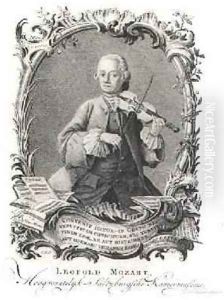Noorde, Cornelis van Paintings
Cornelis van Noorde was a Dutch artist born in 1623 in Haarlem, a city known for its rich artistic tradition, particularly during the Dutch Golden Age. He was an integral part of the vibrant art scene in the Netherlands during the 17th century, a period when Dutch art flourished with an emphasis on realism, attention to detail, and innovative use of light and shadow. Cornelis van Noorde was known for his versatility across different mediums, including painting, drawing, and printmaking, showcasing his skill in capturing the essence of his subjects with precision and creativity.
Van Noorde's early life was deeply rooted in the artistic environment of Haarlem, where he was likely exposed to the works of contemporary Dutch masters. This exposure played a crucial role in shaping his artistic styles and techniques. Although not much is known about his formal education in art, it is believed that he apprenticed with local artists, a common practice at the time for young artists to develop their skills. Throughout his career, Cornelis van Noorde’s work exhibited a keen observation of daily life, landscapes, and portraits, embodying the characteristic Dutch focus on genre scenes and naturalistic representations.
During his lifetime, van Noorde gained recognition for his contributions to Dutch art, particularly through his engravings and drawings which were highly regarded for their intricate detail and expressive quality. His works often depicted scenes from everyday life, landscapes, and historical themes, executed with a fine sense of composition and an ability to evoke mood and atmosphere. Despite his talents and contributions, Cornelis van Noorde did not achieve the same level of fame as some of his contemporaries, such as Rembrandt or Vermeer, but his work remains appreciated by art historians and collectors for its quality and representation of 17th-century Dutch culture.
Cornelis van Noorde passed away in 1685 in Haarlem, leaving behind a modest but significant body of work that contributes to our understanding of the Dutch Golden Age. His art continues to be studied and admired for its historical value and artistic merit, offering insights into the life and times of 17th-century Netherlands. While van Noorde may not be as widely recognized as some of his peers, his work holds an important place in the history of Dutch art, reflecting the rich tradition and exceptional craftsmanship of the period.
